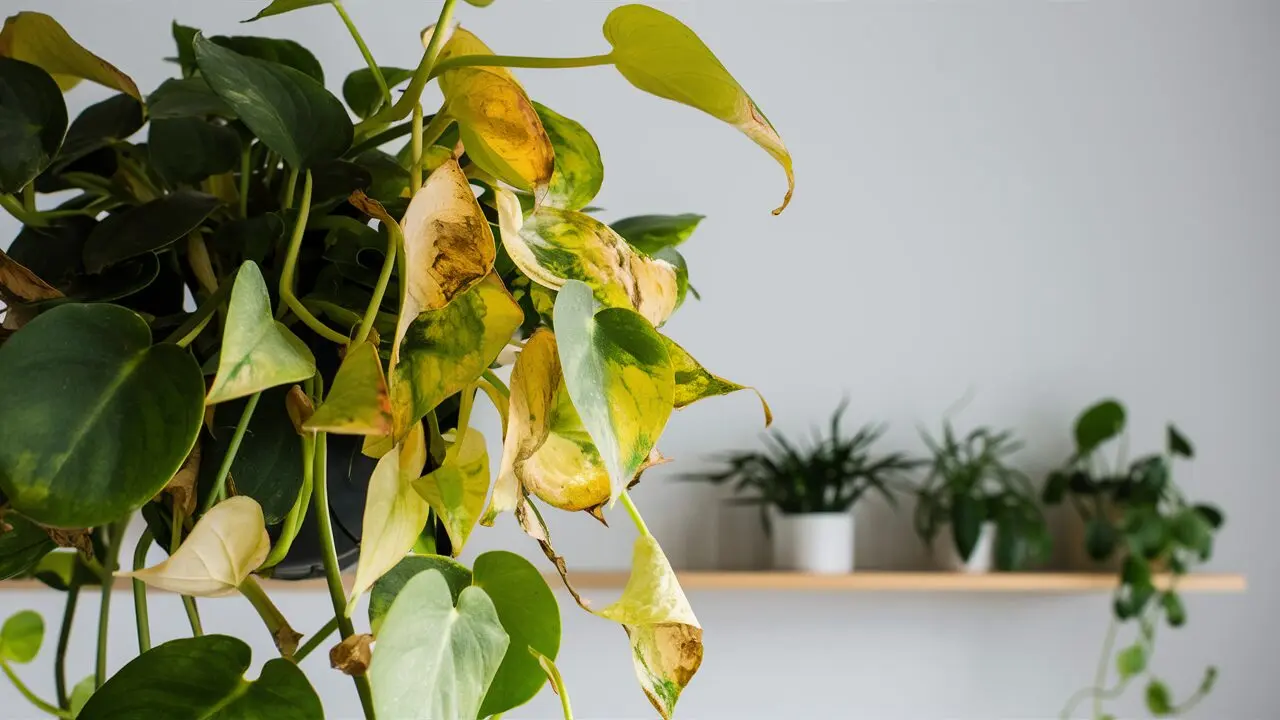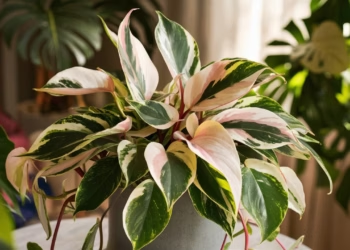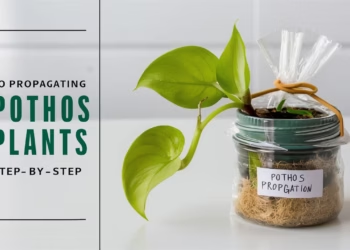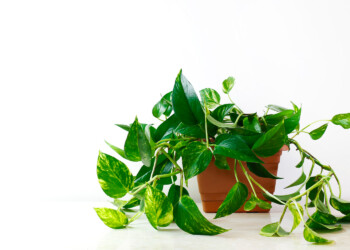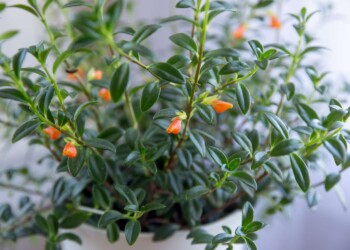Pothos, often dubbed the “devil’s ivy,” is a beloved houseplant known for its resilience and beautiful trailing vines. But what happens when those lush green leaves start turning yellow? Panic might set in, and questions swirl: Why is my pothos turning yellow? Here’s why and what to do. Let’s dive into the nitty-gritty of what could be going wrong and how you can fix it.
Understanding the Basics
What’s Up with the Yellow Leaves?
Yellowing leaves on your pothos plant can be disheartening. It’s a sign that something isn’t quite right. Pothos are usually pretty easygoing, but even the hardiest plants can run into trouble. To tackle the issue, we first need to understand the common causes.
Common Causes of Yellowing Leaves
There are several reasons why your pothos leaves might be turning yellow. Here’s a rundown of the usual suspects:
- Overwatering
- Underwatering
- Poor Drainage
- Low Humidity
- Pests
- Nutrient Deficiency
- Lighting Issues
Let’s break these down a bit more.
Overwatering: The Number One Culprit
Symptoms of Overwatering
Overwatering is the most common reason for yellowing leaves in pothos. Pothos plants like their soil to dry out between waterings. If the soil is perpetually soggy, the roots can rot, leading to yellow leaves. You might notice:
- Yellowing starting from the lower leaves.
- Wilting despite moist soil.
- Moldy soil surface.
What to Do
If you suspect overwatering, here’s what you need to do:
- Stop watering immediately and let the soil dry out.
- Check for root rot by gently removing the plant from its pot. If roots are mushy and brown, trim the affected parts.
- Repot in fresh, well-draining soil.
Underwatering: Don’t Let It Get Too Dry
Symptoms of Underwatering
On the flip side, underwatering can also cause yellow leaves. Pothos aren’t drought-resistant and need consistent moisture. Signs of underwatering include:
- Yellowing along with crispy, dry leaves.
- Soil pulling away from the edges of the pot.
- Stunted growth.
What to Do
To remedy underwatering:
- Water thoroughly until it drains out of the bottom.
- Increase watering frequency, especially during warmer months.
- Use a moisture meter to ensure the soil isn’t too dry.
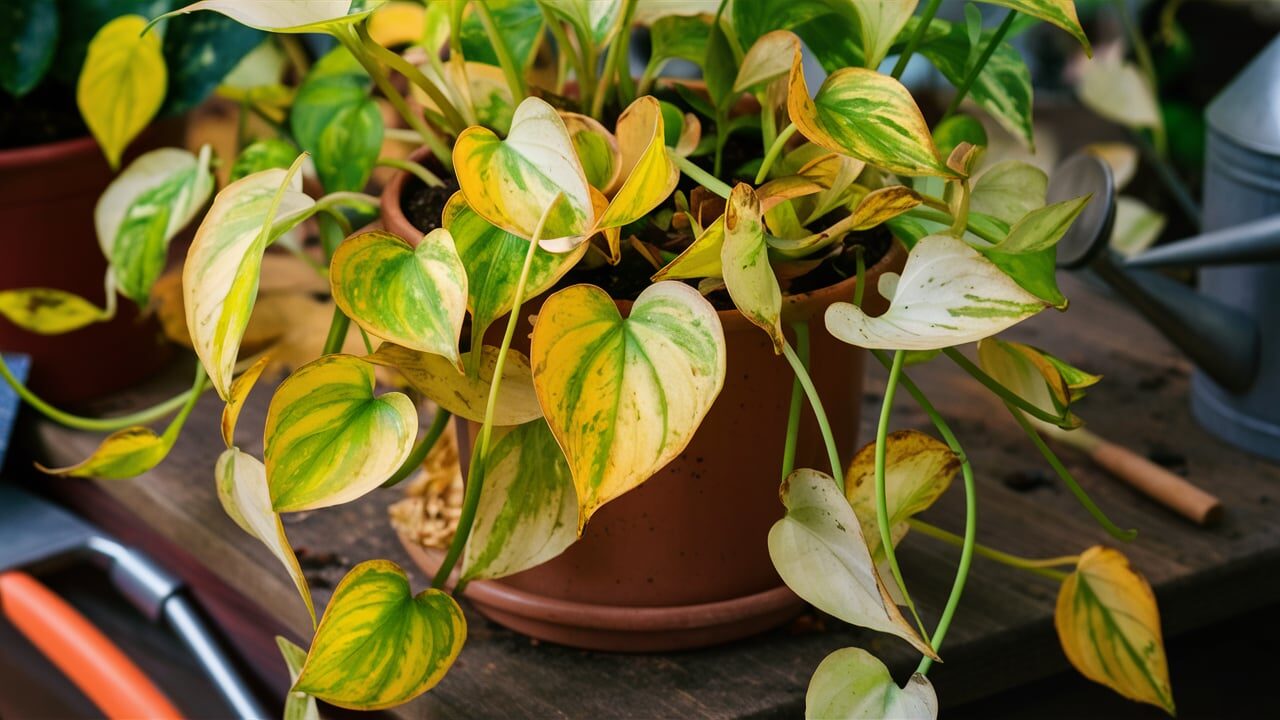
Poor Drainage: Roots Need to Breathe
Symptoms of Poor Drainage
Even if you’re watering correctly, poor drainage can lead to waterlogged soil, which mimics the symptoms of overwatering. Look out for:
- Persistently wet soil.
- Yellowing leaves.
- Foul odor from the soil.
What to Do
Fixing drainage issues involves:
- Repotting in a container with drainage holes.
- Adding perlite or sand to the potting mix to improve aeration.
- Avoiding saucers that hold excess water under the pot.
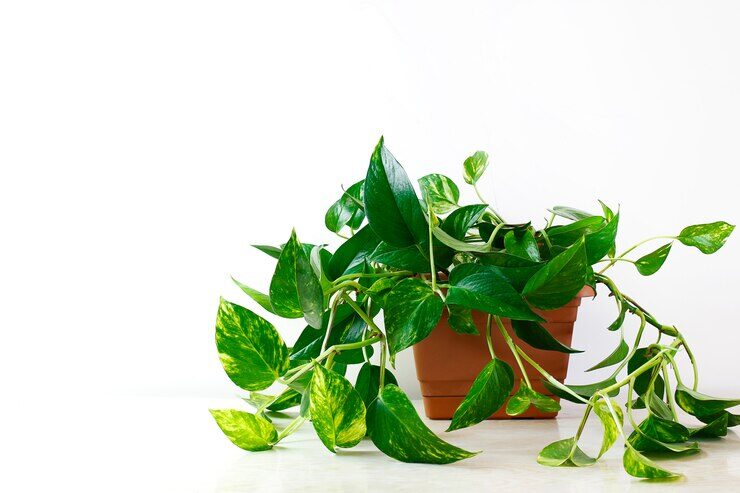
Natural Aging
Individual leaves naturally age and die. Older leaves turning yellow and dropping off is a normal part of the plant’s lifecycle.
What to Do
Regularly prune old, yellow leaves to encourage new growth and maintain the plant’s aesthetic.
Low Humidity: Tropical Plants Need Moist Air
Symptoms of Low Humidity
Pothos are native to humid tropical forests. Indoor environments, especially with heating or air conditioning, can be too dry. Signs include:
- Brown tips on yellow leaves.
- Overall droopiness.
- Leaves curling.
What to Do
Boosting humidity can help:
- Use a humidifier in the room.
- Mist the leaves regularly.
- Group plants together to create a micro-humidity zone.
Pests: Tiny Invaders Can Cause Big Problems
Symptoms of Pest Infestation
Pests like spider mites, mealybugs, and aphids can sap the vitality of your pothos, leading to yellow leaves. Indicators of pests include:
- Sticky residue on leaves.
- Tiny webs.
- Visible insects.
What to Do
To tackle pests:
- Inspect your plant regularly.
- Wipe leaves with a mixture of water and mild soap.
- Use insecticidal soap or neem oil as a treatment.
Nutrient Deficiency: Feed Your Pothos Right
Symptoms of Nutrient Deficiency
Pothos need a balanced diet of nutrients. Lack of essential elements like nitrogen can lead to yellowing leaves. Look for:
- Pale leaves.
- Stunted growth.
- Yellowing between veins.
What to Do
Correct nutrient deficiencies by:
- Feeding with a balanced liquid fertilizer every 4-6 weeks during the growing season.
- Ensuring proper soil pH to facilitate nutrient uptake.
- Using slow-release fertilizer pellets for consistent feeding.
Lighting Issues: The Right Amount of Sunlight
Symptoms of Lighting Problems
Both too much and too little light can cause yellow leaves. Pothos thrive in bright, indirect light. Signs of light issues include:
- Yellowing on the side facing the window (too much light).
- Yellowing all over (too little light).
What to Do
Adjust lighting conditions:
- Move the plant to a brighter spot if it’s too dark.
- Provide filtered light using sheer curtains if it’s too bright.
- Rotate the plant occasionally for even light exposure.
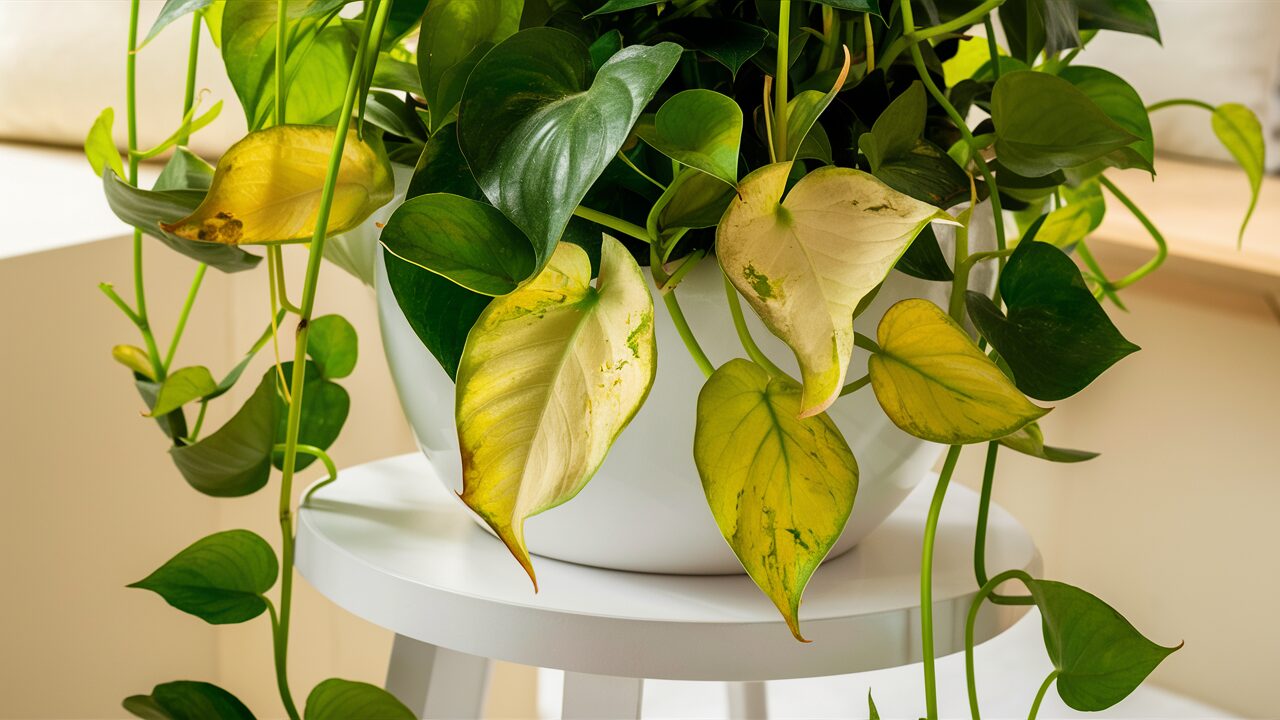
Prevention Strategies
Optimal Watering Practices
- Frequency: Water your pothos every 1-2 weeks, allowing the soil to dry out between waterings.
- Method: Water thoroughly until excess drains out of the bottom of the pot, ensuring complete saturation of the root ball.
Soil and Pot Selection
- Soil: Use a well-draining potting mix, ideally one designed for houseplants or a custom blend of peat, perlite, and vermiculite.
- Pot: Choose pots with drainage holes to prevent water accumulation.
Light Management
- Placement: Position the pothos where it receives bright, indirect light. A north or east-facing window is ideal.
- Supplement: Use grow lights if natural light is inadequate, especially in winter months.
Temperature Control
- Stable Environment: Maintain a consistent temperature range and avoid placing the plant near drafts or direct heat sources.
Regular Monitoring
- Pest Inspection: Check both sides of leaves for pests and treat immediately if detected.
- Nutrient Balance: Regularly feed with a balanced fertilizer and avoid overuse of any single nutrient.
Pruning and Maintenance
- Remove Yellow Leaves: Prune yellow or damaged leaves to promote healthy new growth.
- Train Vines: Guide and trim vines to manage growth and shape the plant.

Yellowing leaves on a pothos plant can be a gardener’s nightmare, but with a little detective work and some TLC, you can bring your plant back to life. Remember, the key is balance-consistent watering, adequate light, proper nutrition, and a watchful eye for pests. When you find yourself asking, “Why is my pothos turning yellow? ”, you’ll now have a comprehensive guide to help you troubleshoot and revive your beloved plant.
FAQs
Why is my pothos turning yellow all of a sudden?
Sudden yellowing could be due to a drastic change in environment, overwatering, or pest infestation. Examine recent changes and inspect your plant closely.
Should I remove yellow leaves from my pothos?
Yes, removing yellow leaves helps the plant focus its energy on healthy growth. Use clean scissors to avoid spreading disease.
How often should I water my pothos?
Water your pothos when the top inch of soil feels dry. This usually translates to once every 1-2 weeks, depending on your environment.
What does overwatered pothos look like?
Overwatered pothos typically show signs such as yellowing leaves, wilting, and mushy or soft stems. The leaves may also develop brown spots around the edges and eventually all over.
Can yellowing leaves turn green again?
Once a leaf has turned yellow, it is unlikely to turn green again. Yellowing leaves often indicate a problem that needs to be addressed, such as overwatering, underwatering, or nutrient deficiencies. It’s best to remove the yellow leaves to allow the plant to focus its energy on new growth.
How often should I water pothos?
Pothos generally prefer to dry out between waterings. Depending on factors like light and air flow, you should water your pothos every 4-7 days. Ensure the soil is dry before watering again to avoid overwatering.
Can low light cause pothos leaves to turn yellow?
Yes, insufficient light can lead to yellowing leaves. Ensure your pothos receives bright, indirect light.
